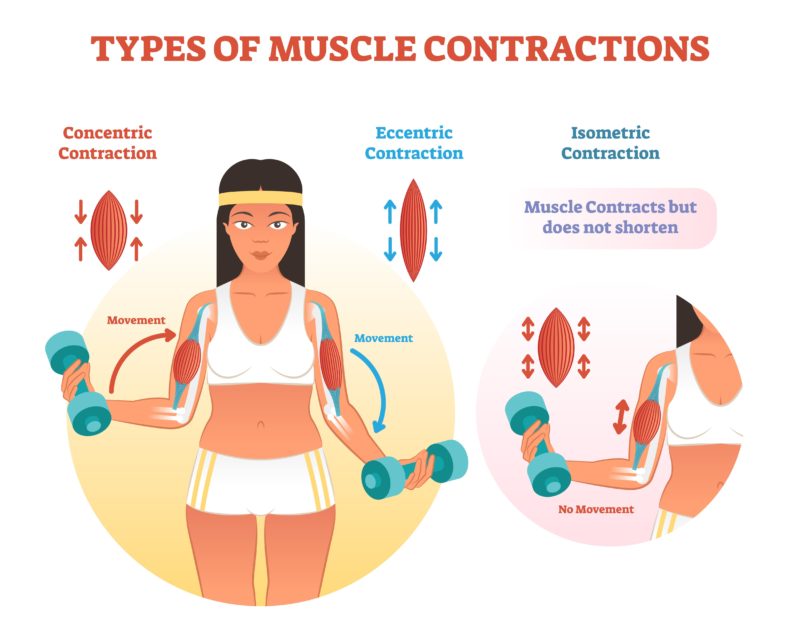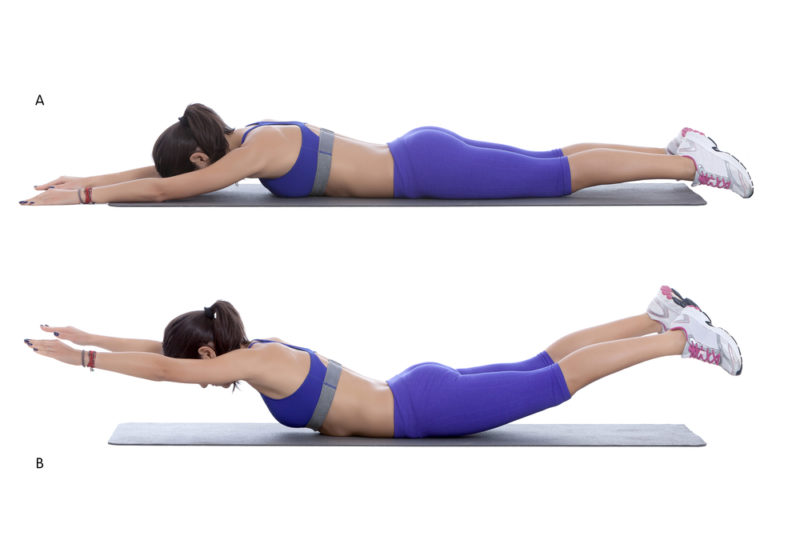Isometric vs Isotonic Exercises: Which Workout is Right for You?
Isometric and isotonic exercises are two popular ways to work out. Simply put, isometric exercises, like planks, mean holding still, while isotonic exercises, like lifting weights, involve movement. Each has its own set of benefits. Wondering which one’s better? It really depends on what you’re looking to achieve. In this guide, we’ll break down the main points and benefits of each, helping you choose the best fit for your fitness journey.
What Is Isotonic Exercise | What Is Isometric Exercise | Comparison | Benefits | 5 Exercises | Final Verdict | FAQs
Isometric vs Isotonic: Understanding The Differences and Benefits
It’s another day at the gym. As you step onto your machine, you look around.
On one side, a jacked dude is curling weights – muscles in motion (isotonic).
On the other, a woman’s holding a rock-solid plank, not a twitch in sight (isometric).
Both are working out, but in such different ways.
It sparks a question: which exercise type offers the best results?
Let’s journey understand the isometric and isotonic exercises in detail to amplify those gains. And guess what?
We’ll explain this seemingly confusing concept with a simple can of coke as our guide.
What Is An Isotonic Exercise?
When you go to the gym, many exercises you do are called isotonic exercises. These exercises involve moving your muscles – they either get shorter or longer. The name “isotonic” comes from Greek words that mean “equal tone”.
So, in these exercises, your muscle tone stays steady while you move.
Think of it like lifting weights or doing squats; that’s isotonic in action!

What Is An Isometric Exercise?
Isometric exercises are ones where you engage your muscles but don’t move. For example, when you hold a position and feel your muscles working hard.
The word “isometric” is made from Greek words that mean “equal measure”. So, in these exercises, your muscles stay the same length, even though they’re working.
A good example is when you hold a plank position or wall sits – you’re not moving, but your muscles are definitely feeling it!

Comparing Isotonic and Isometric: Key Differences
Understanding difference between isotonic and isometric exercises gives you a deeper insight into the effectiveness of each method of workout. It will also help you identify which one to perform when.
To simplify the difference, we’ll use the soda can analogy.
Picture this: you’re at the gym and you spot someone doing a bicep curl. That’s an isotonic exercise. Now, imagine you’re holding a can of soda. It might seem lightweight, but it’s about to give you a hands-on understanding of the difference between isotonic and isometric exercises.
Concentric Muscle Contraction
Grab the can and hold it firmly by your side. Without moving your elbow, curl the can upward. As the can rises, your bicep muscle shortens. This shortening, when your muscle overpowers the weight of the can, is what we call a concentric contraction. It’s the active phase of lifting, where your muscle is doing the main work.
Eccentric Muscle Contraction
Now, it’s time to lower the can. Do it slowly, resisting the pull of gravity. As you lower the can, your bicep lengthens, but it’s still contracted to control the motion. This lengthening phase is termed eccentric contraction. It’s essential for muscle strength, as controlling the downward phase can often be just as challenging as lifting. Also, controlled lowering ensures safety, especially with heavier weights where a sudden release can lead to injuries.
Isometric Muscle Contraction
Hold the can halfway up, keeping it stationary. Your bicep is contracted, but it’s not moving or changing length. This static hold is an isometric contraction. It challenges the muscle to maintain force without any movement. For a real-world example, think of planks or wall sits. Holding that position requires significant muscle tension, even though there’s no actual motion involved.
Verdict: Isometric Vs. Isotonic Training – Which One’s Better?
Isotonic and isometric exercises both help you get stronger and more stable. The answer to “which one’s better?” really depends on what you want to achieve and your current health. Your fitness goals, current physique and overall workout preferences determine which workouts you should do.
For the best results, it’s good to mix both into your workouts. The key is to do them right – consistently!

Benefits of Each Exercise Type
Every type of exercise offers unique benefits, catering to various fitness needs and goals. Whether you’re looking to enhance strength, flexibility, or just stay active, understanding the advantages of isometric and isotonic exercises can help you craft the perfect fitness regimen.
Benefits of Isometric Exercises
Isometric exercises are those where you hold a position, like planks. They may look simple but offer a multitude of benefits:
- Maximum Muscle Activation: You engage and activate your muscles fully during the hold.
- Boosts Bone Density: Helps in preventing conditions like osteoporosis.
- Better Cholesterol Control: Regular isometric workouts help manage cholesterol levels.
- Digestive Boost: It enhances your digestive processes.
- Muscle Maintenance: Helps in maintaining and defining muscle tone without excessive strain.
- Recovery Tool: Perfect for rehab after injuries since they’re low-impact yet effective.
- Core Strengthening: Many isometric exercises engage and strengthen the core muscles.
Benefits of Isotonic Exercises
Isotonic exercises involve movement, like lifting weights or doing squats. They’re dynamic and come with their own set of perks:
- Variety of Workouts: There are numerous isotonic exercises to choose from, keeping your routine diverse.
- Cost-Effective: Most isotonic exercises don’t require any equipment.
- Improved Circulation: These exercises get your blood pumping, enhancing overall circulation.
- Total Body Workout: You can target all major muscle groups with different isotonic exercises.
- Efficient Workouts: They often require fewer repetitions to feel the burn, making them time-efficient.
- Full Range Strength: They build strength throughout the entire range of motion, ensuring balanced muscle development.
- Calorie Burn: Isotonic exercises, especially those involving weights, help burn more calories.
Top 5 Isometric vs Isotonic Examples
Exercising is not just about the movements but understanding the types and what they offer.
Here’s a closer look at some popular exercises, with their isometric and isotonic versions:
1. Planks

2. Squats

3. Overhead Holds

4. Glute Bridges

5. Superman

Final Verdict: Isometric vs Isotonic – Which Should You Choose?
Frequently Asked Questions
What is the difference between isometric and isotonic exercise?
Isometric exercises involve holding a static position where muscles contract without changing length, like holding a plank.
Isotonic exercises involve muscles contracting through a range of motion, like lifting weights in a bicep curl. In simple terms, isometric is about holding a position, and isotonic is about movement.
How do isometric and isotonic contraction differ?
Isometric contraction occurs when muscles contract without changing length, such as holding a heavy object in place.
Isotonic contraction involves muscles changing length during the contraction, either shortening (concentric contraction) like lifting an object, or lengthening (eccentric contraction) like lowering it.
Simply, isometric is “no movement” contraction, and isotonic involves “movement” contraction.
What is an isotonic muscle contraction?
An isotonic muscle contraction is when the muscle changes in length as it contracts. This contraction can be of two types: concentric, where the muscle shortens (like when you lift a weight) and eccentric, where the muscle lengthens (like when you lower that weight back down). During isotonic contractions, the muscle maintains a constant tension while moving.
Is a bicep curl isotonic or isometric?
A bicep curl is typically isotonic because the muscle changes in length during the movement. The bicep muscle shortens as you curl the weight up (concentric contraction) and lengthens when you lower the weight down (eccentric contraction).
However, if you were to hold the weight at a specific point without moving, that would be an isometric contraction.
Is a push up isometric or isotonic?
A push-up is primarily isotonic because the muscles involved change length as you lower your body down and push yourself back up. During this movement, your muscles experience both concentric (shortening) and eccentric (lengthening) contractions.
However, if you were to hold a push-up position without moving, especially in the midway or plank position, that would be an isometric contraction.
What is the advantage of isotonic contractions?
Isotonic contractions work your muscles through a full range of motion, improving joint mobility and muscle flexibility. This type of contraction strengthens muscles across their entire length. This results in more functional strength, better posture, and enhanced muscle definition. Isotonic exercises, like lifting weights, also aid in increasing muscle endurance and can contribute to better overall movement and coordination.
Is jogging isotonic or isometric?
Jogging is primarily isotonic, as the muscles involved go through a range of motion, contracting and lengthening, to propel the body forward. However, certain stabilizing muscles might have minor isometric contractions to maintain posture and balance during the activity.
Isometric contraction occurs when muscles contract without changing length, such as holding a heavy object in place.
Isotonic contraction involves muscles changing length during the contraction, either shortening (concentric contraction) like lifting an object, or lengthening (eccentric contraction) like lowering it.
Simply, isometric is “no movement” contraction, and isotonic involves “movement” contraction.
An isotonic muscle contraction is when the muscle changes in length as it contracts. This contraction can be of two types: concentric, where the muscle shortens (like when you lift a weight) and eccentric, where the muscle lengthens (like when you lower that weight back down). During isotonic contractions, the muscle maintains a constant tension while moving.
A bicep curl is typically isotonic because the muscle changes in length during the movement. The bicep muscle shortens as you curl the weight up (concentric contraction) and lengthens when you lower the weight down (eccentric contraction).
However, if you were to hold the weight at a specific point without moving, that would be an isometric contraction.
Isotonic contractions work your muscles through a full range of motion, improving joint mobility and muscle flexibility. This type of contraction strengthens muscles across their entire length. This results in more functional strength, better posture, and enhanced muscle definition. Isotonic exercises, like lifting weights, also aid in increasing muscle endurance and can contribute to better overall movement and coordination.
Jogging is primarily isotonic, as the muscles involved go through a range of motion, contracting and lengthening, to propel the body forward. However, certain stabilizing muscles might have minor isometric contractions to maintain posture and balance during the activity.


Hi there,I check your new stuff named “Isometric vs Isotonic Exercises: Examples, Differences and Benefits” regularly.Your story-telling style is witty, keep doing what you’re doing! And you can look our website about free proxy.